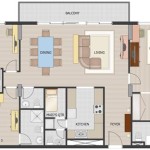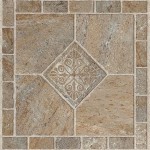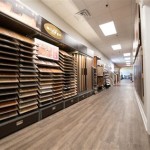How Much Are Floor-to-Ceiling Windows?
Floor-to-ceiling windows, also known as picture windows, offer expansive views and flood interiors with natural light. They can dramatically transform a space, creating a sense of openness and connection with the outdoors. However, this dramatic aesthetic comes with a price tag that can vary significantly depending on several factors.
Understanding these contributing factors is crucial for budgeting and making informed decisions. While providing an exact price is impossible without specific project details, this article will explore the key elements influencing the final cost of installing floor-to-ceiling windows.
Window Size and Configuration
One of the most significant cost determinants is the sheer size of the windows. Larger windows require more materials, including glass, framing, and supporting structures. This naturally translates to a higher overall cost. Furthermore, the complexity of the window configuration also plays a role. Standard rectangular shapes are generally less expensive than custom shapes, such as arches or trapezoids, which require specialized manufacturing processes.
For instance, a single, large rectangular floor-to-ceiling window will typically be less expensive than a series of smaller windows combined to achieve a similar overall span. Similarly, curved or angled windows necessitate more intricate fabrication and installation, increasing the project's cost.
Glass Type and Features
The type of glass chosen significantly impacts the overall cost. Standard double-pane glass is the most common and generally the most affordable. However, there are various upgrades available that enhance energy efficiency, security, and noise reduction. These upgrades, while beneficial, come at a premium.
Triple-pane glass, for example, provides superior insulation compared to double-pane, leading to lower energy bills but a higher initial investment. Similarly, laminated glass, which offers enhanced security and noise reduction, increases the cost. Low-E coatings, designed to minimize heat transfer, also add to the price. Specialized glass options, such as tempered or frosted glass, further contribute to the overall expense.
Frame Material
The material used for the window frame is another critical factor affecting the cost. Various frame materials are available, each with its own set of benefits and price points. Common options include vinyl, aluminum, wood, and fiberglass.
Vinyl frames are typically the most budget-friendly option, offering good insulation and low maintenance. Aluminum frames are known for their durability and slim profiles, but they offer less insulation than vinyl. Wood frames provide a classic aesthetic and excellent insulation but require regular maintenance and are generally more expensive. Fiberglass frames offer high durability, excellent insulation, and low maintenance, placing them at the higher end of the price spectrum.
Installation Complexity
The complexity of the installation process is a significant contributor to the project's overall cost. Factors such as the accessibility of the installation site, the need for specialized equipment, and the structural modifications required can all influence the final price.
Installing floor-to-ceiling windows on a second story, for example, may require scaffolding or cranes, adding to the labor and equipment costs. If structural reinforcement is needed to support the weight of the windows, this will further increase the project's budget. Similarly, complex architectural designs or challenging site conditions can contribute to higher installation costs.
Location and Labor Costs
Geographic location plays a role in the overall cost of installing floor-to-ceiling windows. Labor costs vary by region, and the cost of materials can also fluctuate depending on local availability and transportation expenses.
In areas with high labor costs, the installation component of the project will contribute more to the final price. Similarly, if specialized materials need to be shipped from a distant location, transportation costs can add up. Obtaining multiple quotes from contractors in different locations can provide a clearer picture of the potential price range.
Additional Features and Considerations
Beyond the core components of the windows themselves, various additional features and considerations can impact the final price. Motorized blinds or shades, for instance, offer convenience and light control but come at an added cost. Security features, such as reinforced glass or specialized locking mechanisms, also contribute to the overall expense.
Furthermore, obtaining necessary permits and inspections can add to the project's timeline and budget. It's essential to factor in these potential costs when planning for the installation of floor-to-ceiling windows. Consulting with experienced contractors and obtaining detailed quotes will provide a more accurate estimate of the total project cost.

How Much Do Floor To Ceiling Windows Cost In 2025 Checkatrade

Are Floor To Ceiling Windows Expensive Happho

Floor To Ceiling Windows Doors The Cost Value

Floor To Ceiling Windows Modernize

Floor To Ceiling Windows Modernize

Are Floor To Ceiling Windows Worth The Hype

Floor To Ceiling Windows What You Need Know

Floor To Ceiling Windows Authentic Window Design Elmsford Ny

Floor To Ceiling Windows Bellaire Fine Homes

Create Stunning Designs With Floor To Ceiling Windows Pella








